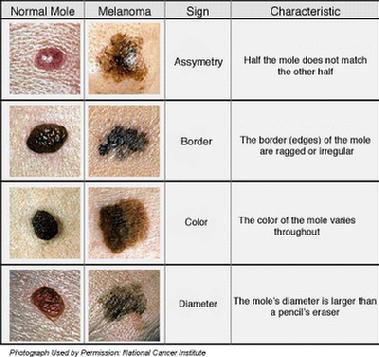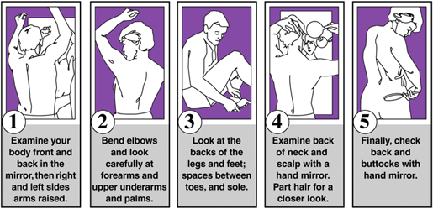Lunch Time Lift;
Juvederm Cheek Enhancements Deliver Non-Surgical, Facial Contouring.
Have you always had puffy bags and hollow cheeks ? Have you tried every serums, gels, rollers, electrical devices and topical plumpers trying to obtain a more rested and youthful appearance? Have you become so frustrated with this problem, that you were considering surgery. Have you ever thought about adding some volume to my cheeks and orbital area with Juvederm XC. This hyaluronic acid filler is an excellent way to turn back the clock and delay the need for surgical procedures. Juvederm XC is an FDA approved filler that lasts up to one year from initial treatment - 1 year! The new Juvederm XC formulation is enhanced with a numbing agent for a much more comfortable experience. Sharon J. Littzi, M.D. has the expertise, training and artistic skill of Park Avenue experts... fortunately she is close by in New Canaan, CT.
After she strategically injects Juvederm in your cheek and orbital areas, you will be AMAZED. You will look rested, contoured, chiseled and rejuvenated! It will be truly uplifting! Your friends, family and co-workers will be astonished by your results. It will simply create an instantly beautiful and youthful resurgence in the contour and lift of the face.
Dr. Littzi's cheek enhancements using Juvederm XC are non-surgical, non-invasive, and safe. Dr. Littzi is an expert at evaluating each individual's needs and creating an effective procedure that will naturally enhance your appearance and boost your confidence. During the consultation, she will explain the procedure in detail so that you will know exactly what to expect from the treatment. Call 203-966-2336 for your FREE consultation!!!!
|
___________________________________________________________________________________________________________________________________________________________
___________________________________________________________________________________________________________________________________________________________
|
Detecting Skin Cancer
Aesthetic Dermatology of Fairfield County Staff- Wednesday May 5, 2010
Often, the first sign of melanoma is a change in the size, shape, color, or feel of an existing mole. Most melanomas have a black or blue-black area. Melanoma also may appear as a new mole. It may be black, abnormal, or “ugly-looking.”
It is important to know the difference between melanoma and a harmless mole. A normal mole is most often an evenly colored brown, tan, or black spot on the skin. It can be either flat or raised. It can be round or oval. Moles are usually less than 1/4 inch in diameter, or about the width of a pencil eraser. Moles can be present at birth or they can appear later. Several moles can appear at the same time.
Once a mole has developed, it will usually stay the same size, shape, and color for many years. Moles may fade away in older people. Most people have moles, and almost all moles are harmless. But it is important to spot changes in a mole-- such as its size, shape, or color-- that may signal a developing melanoma. You should see your doctor if you have a mole or growth that worries you.
The ABCD Rule can also help tell a normal mole from a melanoma:
A: asymmetry – one half of the mole does not match the other half
B: border irregularity – the edges of the mole are ragged or notched
C: color – the color of the mole is not the same all over. There may be shades of tan, brown, or black, and sometimes patches of red, blue, or white
D: diameter – the mole is wider than about 1/4 inch (although doctors are now finding more melanomas that are smaller)
Other important signs of melanoma include changes in size, shape, or color of a mole. Some melanomas do not fit the descriptions above, and it may be hard to tell if the mole is normal or not, so you should show your doctor anything that you are unsure of.
Skin cancers often don’t cause symptoms until they become quite large. Then they can bleed or even hurt. Basal cell carcinomas often appear as flat, firm, pale areas or as small, raised, pink or red, translucent, shiny, waxy areas that may bleed after minor injury. You might see one or more irregular blood vessels, a depressed area in the center, or blue, brown, or black areas. Large ones may have oozing or crusted spots. Squamous cell carcinoma may appear as growing lumps, often with a rough surface, or as flat, reddish patches that grow slowly.
If you have a question or concern about something on your skin, see your doctor. Do not use pictures of other moles to try to diagnose it yourself. Pictures are useful examples, but they cannot take the place of a doctor’s examination.
|
|
|
 Clothes can protect your skin against the sun's harmful ultraviolet (UV) rays. But not all clothing is created equal. The Clothes can protect your skin against the sun's harmful ultraviolet (UV) rays. But not all clothing is created equal. The
tightness of the weave, the weight, type of fiber, color and amount of skin covered all affect the amount of protection they
provide.
What a UPF Rating Really Means
UPF stands for Ultraviolet Protection Factor and indicates how much of the sun's UV radiation is absorbed. A fabric with a
rating of 50 will allow only 1/50th of the sun's UV rays to pass through. This means the fabric will reduce your skin's UV
radiation exposure significantly, because only 2 percent of the UV rays will get through.
What's the Difference between UPF and SPF?
SPF stands for Sun Protection Factor and is the rating you're familiar with for sunscreens and other sun-protective products. It measures the amount of time it takes for sun-exposed skin to redden, while UPF measures the amount of UV radiation that penetrates a fabric and reaches the skin.
Which Fabrics are Best?
As a rule, light-colored, lightweight and loosely-woven fabrics do not offer much protection from the sun. That white T-shirt you
slip on at the beach when you feel your skin burning provides only moderate protection from sunburn, with an average ultraviolet protection factor (UPF) of 7. At the other end of the spectrum, a long-sleeved dark denim shirt offers an
estimated UPF of 1,700
– which amounts to a complete sun block. In general, clothing made of tightly-woven fabric best protects skin from the sun.
The easiest way to test if a fabric can protect your skin is to hold it up to the light. If you can see through it, then UV radiation
can penetrate it – and your skin.
The color of the fabric also plays a role. Darker-colored fabrics are more effective than lighter at blocking out the sun. For instance,
the UPF of a green cotton T-shirt is 10 versus 7 for white cotton, and a thicker fabric such as velvet in black, blue or dark green has
an approximate UPF of 50.
Fabric Content and the Wearer's Activity Make a Difference
What the clothing is made of matters. Fabrics such as unbleached cotton contain special pigments called lignins that act as UV
absorbers. High-luster polyesters and even thin, satiny silk can be highly protective because they reflect radiation.
Even if the piece of clothing has a good UPF, what you do while wearing it can make a difference. If the fabric gets stretched, it
will lose some of its protective ability, because the fabric becomes thinner and more transparent to light. And once it gets wet, it
can lose up to 50 percent of its UPF. In Florida, it is a common practice for parents to put a white T-shirt on their children to protect
them from the sun while swimming. But when that T-shirt gets wet, it provides a UPF of only 3.
Consider High-Tech Clothing
When selecting clothes for sun protection, consider fabrics that have been specially treated with chemical UV absorbers, known as
colorless dyes. These prevent some penetration of both UVB and UVA rays. A number of manufacturers are now making special
sun-protective clothing that has been treated with a chemical sunblock during the manufacturing process. In addition, they use
fabrics of the weave and colors that provide protection best. The garments are designed to cover as much of the skin as possible.
___________________________________________________________________________________________________________________________________________
|
|

Sunscreen is essential if you to avoid skin problems and cancer.
With the official start of summer upon us, it's time to stock up on sunscreen. There are a vast number of choices stocking the store shelves today, so how do you know which ones provide the best protection against sunburn, skin cancer and a host of other damages to the skin caused by too much sun?
According to Dr. Sharon Littzi, an aesthetic dermatologist in New Canaan, too much sun can cause wrinkling, actinic keratoses or pre-cancerous lesions, skin cancer including basal cell cancer and the more serious types of cancer, squamous cell carcinoma and malignant melanoma.
"Some dermatologists would agree that 90 percent of aging is the result of sun damage and most of it occurs before the age of 18. The sun damages the elastin and collagen fibrils which results in accelerated aging and sagging of the skin," Littzi says.
In addition, cataracts may be the result of sun damage and freckling is an easy sign of sun-damaged skin. "If a mother sees freckling on a child, she should be aggressive with more and more sunblock," Littzi warns.
The most damaging sun rays are ultraviolet A and ultraviolet B rays or UVA and UVB. The percentage of protection from damaging UV rays is: SPF 15 = 92%, SPF 30 = 97%, SPF 40 = 97.5%.
"Sunscreens that protect against UVA and UVB rays (are) what dermatologists classify as broad spectrum; products that are effective for everyone," Littzi says.
Littzi recommends these brands of brod spectrum suncreens: Blue Lizard high SPF products, Bull Frog high SPF products, Neutrogena high SPF products and Anthelios high SPF products.
Physical sunscreens containing zinc oxide or titanium dioxide protect against UVB and UVA. However, zinc oxide blocks more UV radiation than titanium dioxide and, therefore, is the preferred ingredient. Some chemical sunscreens can also block UVA rays. Octocrylene is a chemical known as a cinnamate that has both UVA and UVB absorbing properties, and the enzophenones, such as avobenzone, can also absorb both UVA and UVB rays.
Sunscreen should be applied 30 minutes before going out in the sun to give the product time to soak into the skin and it's a good general rule to apply the product liberally.
"Sometimes, when I have a patient with very fair skin, I will tell them to use two different sunblocks. Apply one that is chemical free first and one that contains a chemical block second," Littzi adds.
Littzi says if you are not getting some sun, you run the risk of becoming vitamin D deficient. She recommends taking a Vitamin D supplement and getting a blood test from your family doctor.
For more information go to www.DrLittzi.com
|
Vitamin C program with Sharon J. Littzi, M.D.
Aesthetic Dermatology of Fairfield County staff- June 28, 2010
Over-the-Top Protection You Won’t Find Over-the-Counter
With Sharon J. Littzi, M.D.'s Vitamin C program, you’re on your way to healthier, refreshed, revitalized skin from cell to surface. The Vitamin C program promotes skin rejuvenation from the inside out using a formulation of prescription-strength 4% hydroquinone, which reduces the appearance of hyperpigmentation and age spots, combined with 10% L-ascorbic acid (Vitamin C)—the only topical antioxidant proven to stimulate collagen synthesis and protect your skin by minimizing future skin cell damage.
Vitamin C programs are ideal skin care if you have...
- Minimal fine lines
- Minimal unevenness of skin tone
- Mild hyperpigmentation and minimal age spots
- Intolerance to, or are not ready for, more aggressive anti-aging regimens
- Dry, normal, oily, or even sensitive skin
|
C-Cleansing Gel AM/PM
Application
- Apply a dime-size amount to the entire face with moistened fingertips
- Gently rub in circular motion
- Rinse completely with lukewarm water
Benefits
- Prepares and conditions skin to optimize penetration of Vitamin C
- Enhances skin clarity
- Removes makeup and excess oil
|
|
|
C-Balancing Toner AM/PM
Application
- Twice daily, place a dimesize amount (3–4 pumps) of toner on a cotton ball, apply to the entire face, and let dry
Benefits
- Balances the pH of oily skin
|
|
|
|
C-Clarifying Serum AM
Application
- Apply 5–7 drops of serum to the entire face.
Benefits
- Penetrates skin layers to reduce dark spots and discoloration
- Promotes a more even skin tone
|
|
|
As an additive to Sharon J. Littzi, M.D.'s Vitamin C program for your skin, she also suggests you internally take 1000mg of Vitamin C and 1,000mg of “essential” phospholipids. Please refer to the blog below about healthy collagen. Please call today for your anti-aging, health-promoting, easy-to-swallow Vitamins you may purchase from our office.
|
Top 10 Foods Highest in Zinc
Aesthetic Dermatology of Fairfield County Staff - Thursday June 17, 2010
Many warts are resistant to treatment and medical studies show that because people are ingesting less red meat this could be a source of zinc deficiency. If you have warts, I recommend that you ingest foods which contain zinc while we are treating your warts to insure that your immune system can work in tandem with our efforts
to cure your virus.
Here is a list of the top ten foods that contain zinc:
#1: Oysters
 Depending on type and variety oysters provide 16-182mg of zinc per 100g serving. This accounts for 110%-1200% of the RDA for zinc. The food highest in zinc is the steamed wild eastern oyster which provides 182 mg of zinc per 100g serving. Depending on type and variety oysters provide 16-182mg of zinc per 100g serving. This accounts for 110%-1200% of the RDA for zinc. The food highest in zinc is the steamed wild eastern oyster which provides 182 mg of zinc per 100g serving.
Click to see complete nutrition facts.
#2: Wheat Germ
 Packed in jars and sold toasted, wheat germ is great to sprinkle on top of any food. Try it on salads, rice, or steamed vegetables. Toasted wheat germ provides 17mg of zinc per 100g serving which is 112% of the RDA, crude (untoasted) wheat germ provides 12mg (82% RDA). Packed in jars and sold toasted, wheat germ is great to sprinkle on top of any food. Try it on salads, rice, or steamed vegetables. Toasted wheat germ provides 17mg of zinc per 100g serving which is 112% of the RDA, crude (untoasted) wheat germ provides 12mg (82% RDA).
Click to see complete nutrition facts.
#3: Veal Liver
 The liver of any animal is packed with vitamins and minerals. In this case, veal has the most zinc with 12mg per 100g serving and 81% of the RDA. Liver is best prepared steamed or fried with onions and herbs. The liver of any animal is packed with vitamins and minerals. In this case, veal has the most zinc with 12mg per 100g serving and 81% of the RDA. Liver is best prepared steamed or fried with onions and herbs.
Click to see complete nutrition facts.
#4: Sesame Flour and Tahini(Sesame Butter)
 Sesame products contain about 10mg of zinc per 100g serving (70%RDA). Sesame flour can be used as a substitute for wheat flour in cakes and breads. Tahini is commonly found in hummus, a ground chickpea spread and dip of the middle east, it will provide 4.6mg of zinc per 100g serving (31% RDA). Whole sesame seeds provide 7.8mg/100g (52% RDA). Click to see complete nutrition facts. Sesame products contain about 10mg of zinc per 100g serving (70%RDA). Sesame flour can be used as a substitute for wheat flour in cakes and breads. Tahini is commonly found in hummus, a ground chickpea spread and dip of the middle east, it will provide 4.6mg of zinc per 100g serving (31% RDA). Whole sesame seeds provide 7.8mg/100g (52% RDA). Click to see complete nutrition facts.
#5: Low fat roast beef
 Low fat beef shoulder,shank,and chuck all contain about 10mg of zinc per 100g serving(70% RDA). If you are looking to buy pre-processed roast beef be sure to consult the nutrition facts about the cut and nutrients. Not all nutrition labels report zinc, so don't worry if you don't see it on there. Low fat beef shoulder,shank,and chuck all contain about 10mg of zinc per 100g serving(70% RDA). If you are looking to buy pre-processed roast beef be sure to consult the nutrition facts about the cut and nutrients. Not all nutrition labels report zinc, so don't worry if you don't see it on there.
Click to see complete nutrition facts.
#6: Roasted Pumpkin and Squash Seeds Roasted Pumpkin and Squash Seeds
A popular food in the Middle East and East Asia pumpkin and squash seeds contain about 10mg of zinc per 100g serving (70% RDA). If you can't find these in your local supermarket you will surely find them in Middle Eastern or East Asian specialty stores. Alternatively, you can also save any pumpkin and squash seeds you have and roast them in your oven. The seeds are typically eaten by cracking the outer shell and eating the seed inside.
Click to see complete nutrition facts. Seeds and Nuts with the Fewest Calories
#7: Dried Watermelon Seeds
 Much like the pumpkin and squash, watermelon seeds are popular in the Middle East and East Asia and they should be in specialty stores catering to those cultures. It is also possible to just eat the seeds raw with the watermelon. You can shell them, or just chew them up whole. Dried watermelon seeds provide 10mg of zinc per 100g serving (70% RDA). Much like the pumpkin and squash, watermelon seeds are popular in the Middle East and East Asia and they should be in specialty stores catering to those cultures. It is also possible to just eat the seeds raw with the watermelon. You can shell them, or just chew them up whole. Dried watermelon seeds provide 10mg of zinc per 100g serving (70% RDA).
Click to see complete nutrition facts.
#8: Cocoa Powder and Chocolate
 Chocolate is showing more and more health benefits and dark chocolate is coming into vogue. Unsweetened baking chocolate provides 9.6mg of zinc per 100g serving for 64% of the RDA. Cocoa powder will provide 6.8mg (45% RDA) per 100g or 5.4mg(39%RDA) per cup. Most milk chocolates provide around 2.3mg(15% RDA) per 100g serving or 1mg(7%RDA) per bar. Click to see complete nutrition facts Chocolate is showing more and more health benefits and dark chocolate is coming into vogue. Unsweetened baking chocolate provides 9.6mg of zinc per 100g serving for 64% of the RDA. Cocoa powder will provide 6.8mg (45% RDA) per 100g or 5.4mg(39%RDA) per cup. Most milk chocolates provide around 2.3mg(15% RDA) per 100g serving or 1mg(7%RDA) per bar. Click to see complete nutrition facts
#9: Lamb
 Lamb is a common meat in the Middle East, Mediterranean, and most of Europe, but is increasing in popularity in the Americas. Lamb provides between 4.2-8.7mg of zinc per 100g serving (28%-58% RDA) depending on cut. Lamb is a common meat in the Middle East, Mediterranean, and most of Europe, but is increasing in popularity in the Americas. Lamb provides between 4.2-8.7mg of zinc per 100g serving (28%-58% RDA) depending on cut.
Click to see complete nutrition facts.
#10: Peanuts
 Ever popular peanuts are a great source of zinc, just watch your portions! 100 grams of oil roasted peanuts will provide 6.6mg of zinc, or 44% of the RDA. The same amount of dry roasted peanuts will provide half as much at 3.3mg per 100 gram serving or 22% RDA. Ever popular peanuts are a great source of zinc, just watch your portions! 100 grams of oil roasted peanuts will provide 6.6mg of zinc, or 44% of the RDA. The same amount of dry roasted peanuts will provide half as much at 3.3mg per 100 gram serving or 22% RDA.
Click to see complete nutrition facts
|
|
FRAXEL DUAL LASER
Aesthetic Dermatology of Fairfield County Staff - Thursday April 29, 2010
Sharon J. Littzi, M.D. announces the arrival of the Fraxel Dual Skin Resurfacing Laser®, the only nonablative fractional resurfacing treatment used to treat acne scars, sun spots, age spots, brown spots, melasma, fine lines and wrinkles on the face, neck, chest and body. The Fraxel re:store laser delivers remarkable results, minimal patient downtime, clinical flexibility and ease of usemaking her one of the first physicians to offer the Fraxel Dual Laser System in Fairfield County.
The introduction of Fraxel Dual System to Dr. Littzi's practice will provide those seeking a safe alternative to surgery with little to no downtime or discomfort. The simple procedure consists of 3-5 treatments. Dr. Littzi says, “Our patients have been pleased with the results from the Fraxel Dual treatments and because there is little to no recovery time involved, they can continue with their daily activities immediately after each treatment.
Fraxel® Dual Laser Treatment can help reduce the components of sun-damaged skin such as “age-spots” (also called sun freckles, liver spots, and lentigines), fine lines or wrinkles, scarring, uneven coloration, skin laxity, textural irregularities, dull tone, and a thinned collagen layer. Many people report an improvement in “smoothness” of the skin, decreased pore size, increased luminosity, increased firmness, and decreased fine lines, reduction of pigment irregularity or blotchiness, and an overall “rejuvenated appearance.” This laser is also safe and effective for tanned skin or skin of color as well as the more difficult to treat areas such as neck, chest and other body surface areas, making it a major advance in the field of laser treatments.
Sharon J.Littzi, M.D.
1 Morse Court
New Canaan, CT 06840
203-966-2336
www.DrLittzi.com - www.CTZERONA.com
________________________________________________________________________________________________________
|
|
|
Aesthetic Dermatology of Fairfield County Staff- Monday May 3, 2010
Our diet for good collagen must have four aspects:
1. Eat proteins high in Proline, and Lysine
Excellent sources of proline are Egg whites and wheat germ.
Excellent sources of Lysine are: dairy products (milk, yogurt, cheese), fish, peanuts, Sesame seeds, and Dal (dried lentils).
2. Eat foods high in Vitamin C to help synthesize collagen.
Vitamin C helps synthesize proline into Hydroxy-proline, and Lysine into Hydroxy-lysine. Vitamin C can help collagen synthesis by about 8 fold.
3. Eat foods that help prevent damage to collagen
Sulfur helps reduce damage to collagen. Specifically Taurine and Lipoid acid in Garlic helps prevent damage to the collagen.
4. Eat foods that help break down of collagen Catechins (Antioxidant) found in green tea helps prevent break down of collagen.
5. Eat food that help strengthen links between collagen fibers
Antioxidants help strengthen the links between collagen fibers.
Fruits: Blackberries, Black Currants, Blueberries, Wild Blueberries, Plums, Elderberries, Purple Figs, Purple Grapes
Vegetables: Beets, Egg plant skin, Purple Asparagus, Purple Belgian, Endive, Purple Cabbage
|
|
|
How to Perform a Skin Self-Exam
It's important to check your own skin once per month. You should know the pattern of moles, freckles, and other marks on your skin so that you'll notice any changes. Your self-exam is best done in front of a full-length mirror. A hand-held mirror can be used for areas that are hard to see. A family member can check areas such as your lower back or the back of your thighs.
Spots on the skin that change in size, shape, or color should be seen by a doctor right away. Any unusual sore, lump, blemish, marking, or change in the way an area of the skin looks or feels may be a sign of skin cancer.
If there is any reason to suggest that you have a melanoma, your doctor will order further exams and tests to find out if that is the case.
|
|



 Clothes can protect your skin against the sun's harmful ultraviolet (UV) rays. But not all clothing is created equal. The
Clothes can protect your skin against the sun's harmful ultraviolet (UV) rays. But not all clothing is created equal. The





